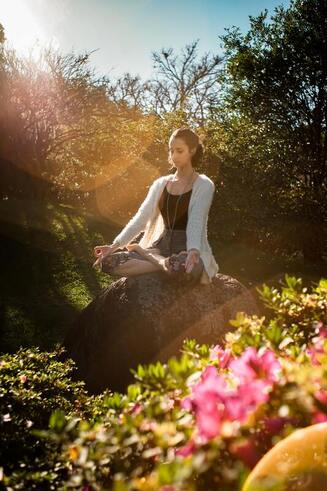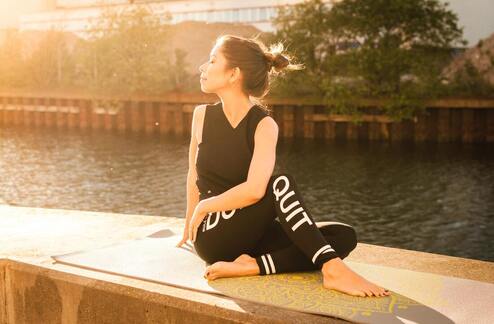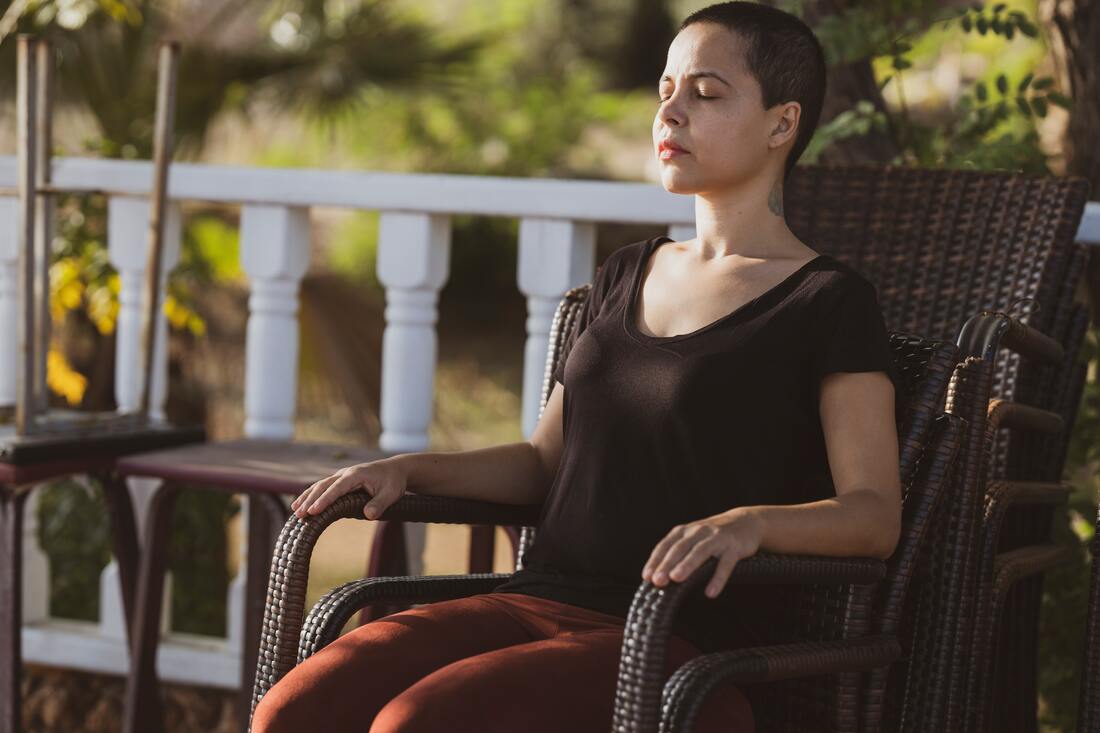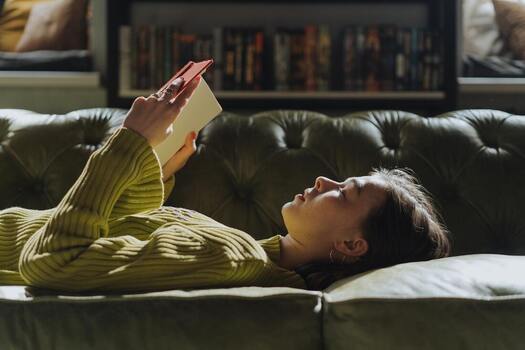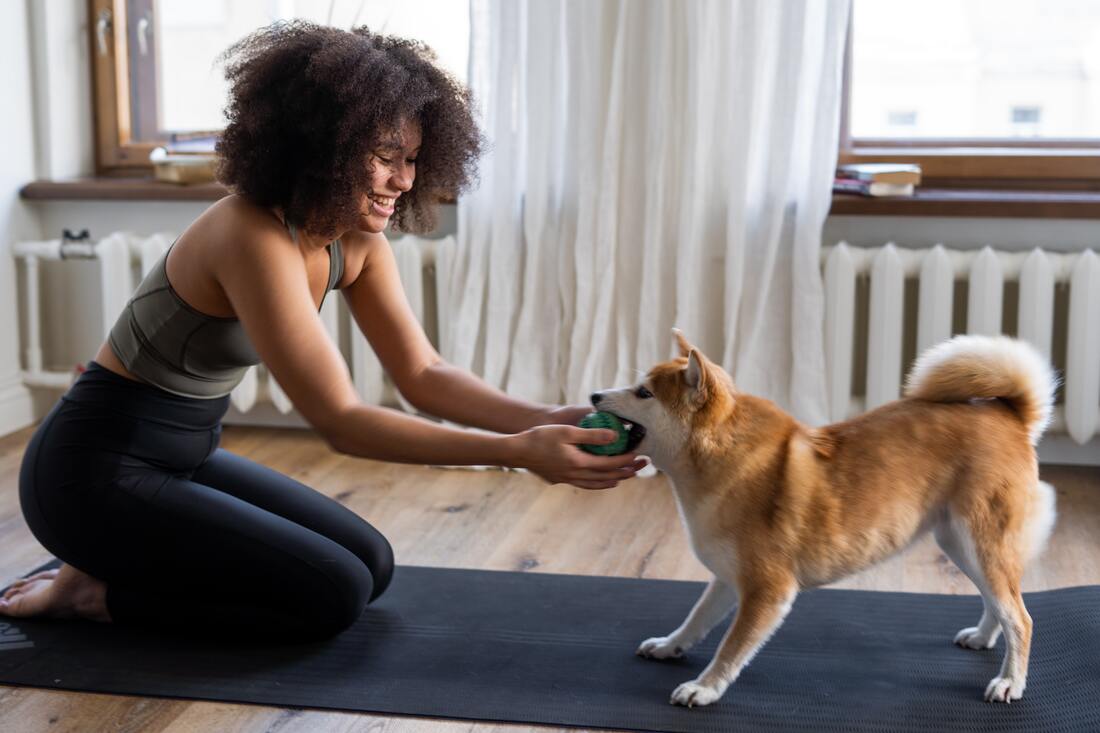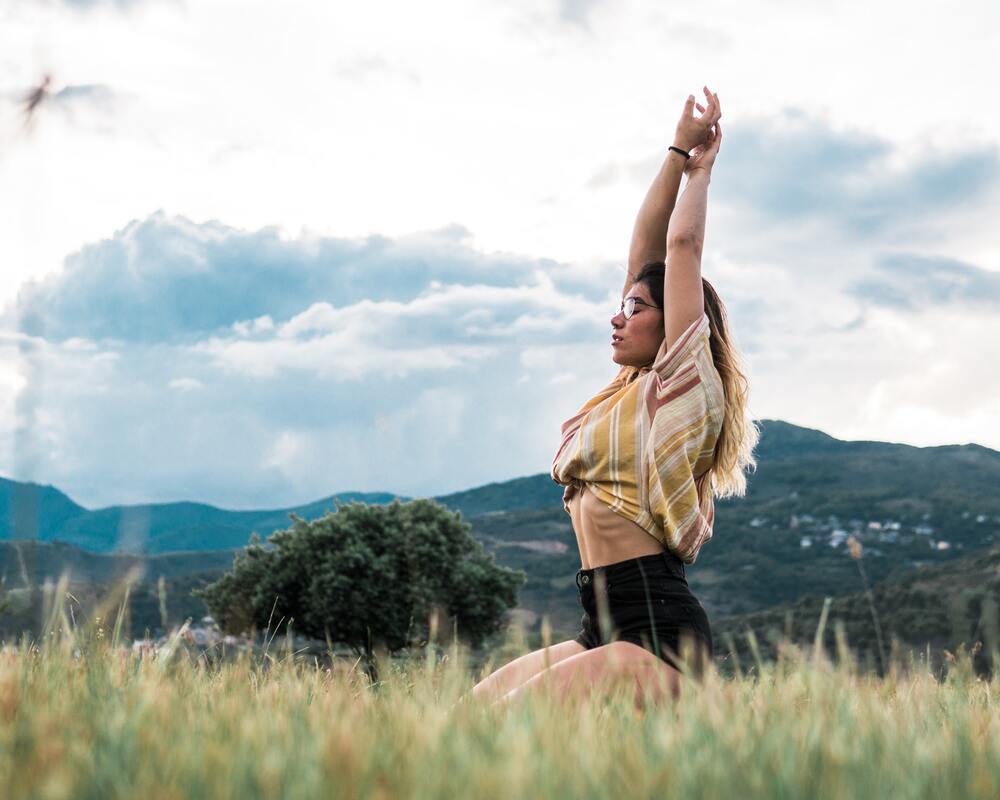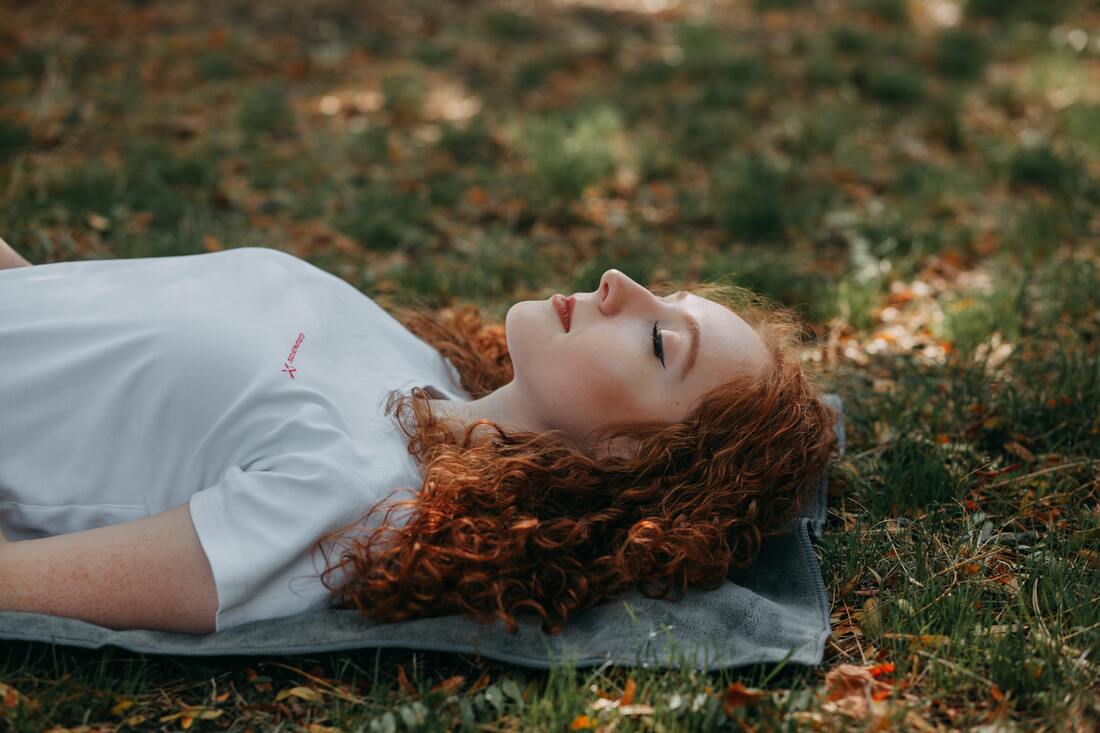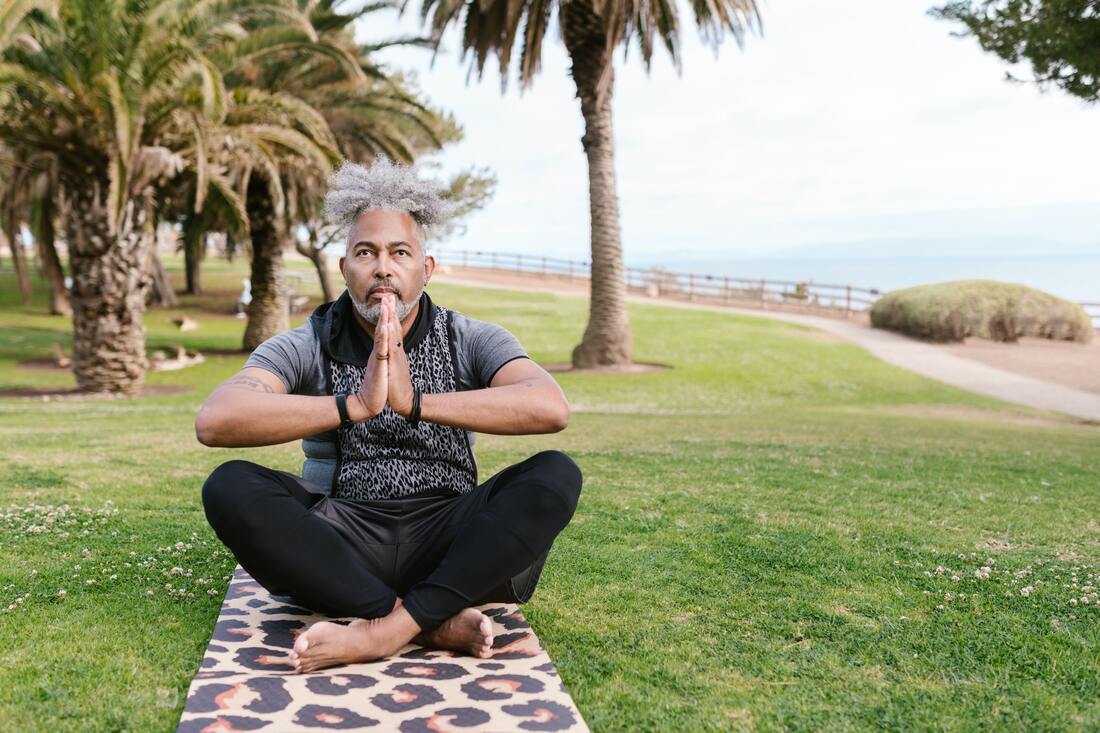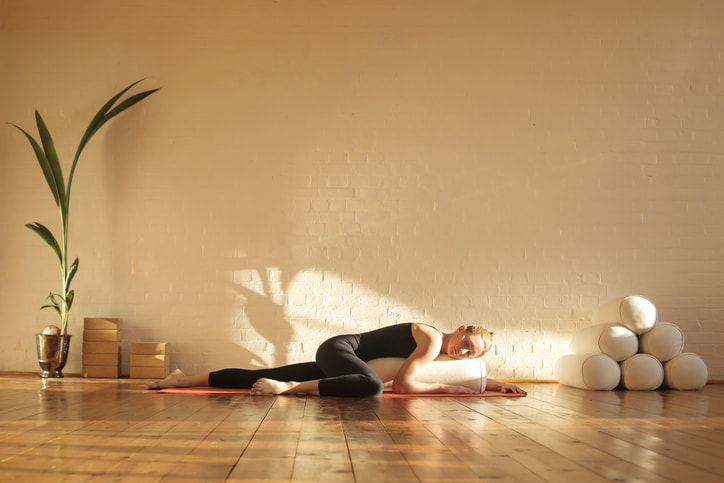|
Image by Pexels
When you’ve made a commitment to start living a healthier lifestyle, whether it’s because you received a warning from your doctor or if you’ve just decided you want to look and feel your very best, it’s good to start with a plan. An important part of your self-care and wellness plan should be to recognize that a healthier lifestyle is more than just adding more fruits and vegetables to your diet, although that is a very important part of it; it’s designing a whole new healthier way of living. Assessing Your Current State of Wellness Make a physician's appointment to get a baseline of your physical status, such as weight, cholesterol, blood pressure, blood sugar levels, etc. Then find a good nutrition app that will help you track the foods you eat for nutritional value and caloric levels. Then assess how well you’re sleeping. You can measure this with a wearable fitness tracking device like Fitbit, or an under-the-mattress monitor, like the Withings Sleep Tracking Mat. There are many factors that impact your emotional and mental health, like mood, worry, alcohol consumption, relationships, and sleep. To assess your own mental and emotional health, the Mayo Clinic has devised an assessment you can take at home. Having a Written Plan Identify your objectives, such as how much weight you want to lose or how many miles you can run or walk per day. How many hours of sleep per night-experts agree you need 7-9. What you expect you’ll be able to see with better emotional health, such as a healthy relationship. Then, establish a timeline and set achievable milestones. You should also create a list of resources to help you achieve these goals, such as physicians, therapists, nutritionists, and fitness coaches. To help you figure out how to begin, you can purchase a wellness journal to guide you. Like The Clever Fox Wellness Planner, which features customizable pages and was developed with health, fitness, and nutrition experts. Self Care Making time for self-care each day can range from scheduling a 30-minute walk outside to carving out an hour to enjoy a hobby that you find relaxing and rewarding. One of the most positive self-care practices is yoga, as it benefits your body, mind, and soul. You can find Yoga classes near where you live by doing an online search. Then meet with the instructor to make sure they have classes that suit your goals. Or you can take classes online with live-streaming classes from 532Yoga. They believe that yoga is for everybody and that with regular practice, you can expect to increase your strength, flexibility, and balance, but even more importantly, have fun! Education as Wellness Education is a way to a better future, but it’s about the here and now for you, too. A well-rounded education isn’t just about learning new skills and facts, it’s also about developing your mind and body. The more education you have, the more likely you are to take care of yourself. Gaining knowledge and learning what you’re good at and what kind of career can make you feel fulfilled is one of the best methods of self-care. One of the most fulfilling and satisfying careers is that of teaching, and if that is something that speaks to you, you should know that you can get a bachelor of education degree online. Fitting education into your schedule is easier online because the core courses are only 5 weeks long. Wellness in Your Home A cluttered and messy home can cause stress and anxiety, and one of the best ways to reduce stress at home is to create an atmosphere that lends itself to relaxation and improved well-being. By making a health and wellness plan for yourself, you’re making a commitment to living a healthier and happy life for yourself and for those around you. By having realistic expectations and a reasonable timetable, it’s possible to achieve the life of wellness and happiness you deserve.
5 Comments
When it comes to yoga, many people know what it is, but they don’t know all the benefits it can provide you with. At 532YOGA, we do our best to ensure that everyone has a unique experience and practices yoga in a way that’ll best fit their needs and abilities. There are many different benefits to yoga ranging from improving your physical health to your mental health as well.
There are many people who are struggling with different stressors in their lives and find it challenging to relieve that stress. Yoga is one way to work on yourself and bring peace back into your life. Before thinking that it’s not for you, take time to research the different benefits of yoga – you might be surprised at what you find. Below, we’ll be discussing the various benefits that yoga has and how it can improve your life. Improves Strength and Flexibility Practicing yoga has a plethora of benefits, but some of the more common ones include improving your strength and flexibility. When practicing yoga, there are exercises that you can do to target different areas of your body. If you’re looking to improve your strength, then performing exercises such as the downward-facing dog or the warrior pose forces you to work different muscle groups such as your shoulders, arms, and hamstrings, while also stretching your calves and hips. Implementing exercises that force you to use different muscles will result in strengthening those and surrounding areas. When trying to figure out which type of yoga will best fit your needs, think about what you would like to get out of it and begin researching what types of yoga are offered. At 532YOGA, we offer a wide range of classes that consist of power yoga which works on targeting specific muscle groups and is active and vigorous. Or, you could also look into dharma flow yoga which helps to improve your balance and flexibility while implementing relaxation, breathing, and meditation techniques. Finding a class that interests you is important so that you can get the most out of each session. Reduces Stress and Anxiety Practicing yoga has also been shown to aid in improving stress levels. Yoga that involves guided visualizations and deep relaxation techniques through various poses and meditation can allow you to feel more at peace and learn how to relax your mind and body. Many different aspects of life cause stress, whether it involves an illness, a job, or a current financial situation. Out of all the possibilities for why you are stressed, it’s important to understand how to deal with those feelings. When it comes to finances, oftentimes people become stressed due to a lack of management and spend more than they have. Understanding how to properly budget and maintain good credit is vital to ensuring financial stability. It’s important to work on improving your finances because it’ll help you achieve long-term financial goals since there are certain credit score requirements needed to purchase a home, among other large investments. Being able to step back and review your financial situation, as well as taking a break from the daily stress of work life, can help you become less overwhelmed. When you’re dealing with outside stressors, yoga is something that can assist in reducing the stress you feel. Taking time to practice your breathing exercises and meditation can help you to relax your mind and body, allowing you to let go of the overwhelming feeling of anxiety you get from external stressors. Improves Focus and Control In addition to improving your strength and flexibility, yoga also plays a large role in improving your overall focus and control. Practicing yoga involves using meditation as a way to relax your mind and body and promote mindfulness. Through the different movements in yoga, you need focus to move your body into a pose, and then stamina to keep it there for a set amount of time. This combination not only helps your overall yoga performance, but it can also help improve your mental focus. If you’re able to perform and hold difficult poses for a long period, over time you’ll start to feel more confident and be able to better apply the skills you’re learning at yoga into your daily life. Being able to focus on one thing at a time is something that is practiced in yoga because you are only doing one exercise at a time. Take that mindset and apply it to your life. Rather than trying to complete many different tasks at once, take a step back and break down what needs to be done right away and what can wait. If you treat tasks and other external factors in your life like yoga and take it one step at a time, you’ll be able to focus on what you need to get done without being overwhelmed. When you are able to better manage your daily tasks, this will help you feel like you have more control over your day and life. Rather than feeling overwhelmed when you have a lot going on, tap into your yoga practices and lean on that to find peace within yourself. Knowing that there is something that can help you to regain control when times get stressful, will allow you to feel more confident in yourself! Practicing yoga provides many health benefits. Focusing on your mind and body through movements, breathing exercises, and meditation, yoga can help to improve your quality of life. The overall purpose of yoga is to release one’s body and mind of stress and tension that may be a result of difficult situations in your life. Yoga provides you with the knowledge and tools to take control of your health and allows you to practice yoga in a way that works best for you. 532Yoga offers a beautiful award-winning space where we have combined a zen-like eastern minimalism with a reverential, inclusive homage to teachers past and present. Contact us today for more information! 703.209.0049 Perhaps you’ve been struggling with anxiety, depression, or another mental health condition. You’ve experimented with yoga, meditation, journaling, and all kinds of other typical self-care strategies - but you haven’t experienced much in the way of benefits. It’s time to start going beyond the usual self-care tips and exploring new avenues. 532Yoga shares a few ideas for improving your mental health that you may not have tried yet.
Declutter Your Home Creating a better atmosphere at home can definitely boost your mental health. You may not even realize how much a cluttered home can affect your mindset until you clean it up! You can begin by getting rid of items you no longer need, dusting regularly, and adding more storage options to your space. Try Working From Home Maybe you’re getting tired of commuting to work every day. It’s not easy to get up extra early, sit in traffic on your way to the office, and then do it all again at the end of the day. You may want to request a trial run for working from home. You’ll be able to spend more time with your family, get some extra sleep, work out in the mornings, and cook healthy meals rather than getting take out. Begin Practicing Yoga Are you curious about trying out a new form of fitness? Yoga is an excellent way to make a positive impact on both your mental wellness and physical health. Getting started may seem a little overwhelming at first, but you can connect with a local yoga professional who can help you begin your practice. Additionally, there are many apps and online resources that can help you supplement your practice. Plus, you’ll be able to get a full-body workout outdoors. Getting a Pet If you’ve ever had a pet, you know how the unconditional love they give can easily turn a frown upside down! Many pet owners find that having pets benefits their mental health. Newport Academy states that spending time with a pet can lower your stress levels, reduce feelings of depression and loneliness, and even increase your sense of self-esteem. Before bringing your new furry companion home, be sure your living area is outfitted with all the necessary items, such as food, a bed, a crate for training, and a food and water bowl. First, go online and read up on expert and unbiased product reviews and see how they rate in terms of durability, quality and affordability. If you can’t get a pet right now, consider volunteering at a local animal shelter or offering to pet sit for friends. Birdwatching Maybe you’ve never tried birdwatching before - but you may be surprised by how enjoyable it could be! Birdwatching can actually be a great way to care for your mental health. You’ll spend time outside, deepen your connection with nature, and get your mind off of your stress for a while. Scrapbooking Do you have lots of photos and family mementos? Consider creating scrapbooks to preserve those memories. Scrapbooking can be very relaxing. Plus, you’ll get to focus on your artistic skills and enhance your creativity! Reiki Your local yoga studio or massage therapy spa might offer reiki. This is an energy healing practice that can help you process complex feelings and release stress. It doesn’t hurt to try out a session or two to see how you feel afterward! Camping Do you feel like you need to escape from the pressures of daily life for a while? Try planning a weekend camping trip! Camping can help you leave your stresses behind. The Dyrt states that camping can improve your circadian rhythm, give you a boost of dopamine naturally, and even reduce inflammation. Managing your mental health can be complicated. Sometimes, the techniques that work for other people won’t always work for you, and that’s okay. By trying out methods that suit your lifestyle and interests, from decluttering your house to practicing yoga, you may notice that you’re feeling a little better day by day. Photo via Pexels We all have those days, the ones where the clock feels like it is standing still, or the days when you feel like nothing is going your way. It happens to all of us and usually is out of our control. What you can control, however, is how you take care of yourself and your mind after a day like this. Follow along for some simple tricks on how to decompress and destress after a long day.
Make a Yoga Routine Yoga can be a great way for you to relax your mind and body. Not only does yoga give you a chance to stay fit but it can also help you ground your mind and become more in tune with your breath. Not sure where to start? Take a class with 532Yoga; they have beginner to advanced level classes to help you understand the ins and outs of yoga poses, which will help you learn some moves you can do before bed or in the morning to connect your body and mind. The stress is bound to leave your body as you learn to breathe through beautiful yoga positions and improve your overall wellness. The more classes you take the more knowledgeable you will become and more able to ground yourself and your thoughts. Make sure you always check your alignment with 532Yoga instructors before you try anything new. Focus On Self-Care After a long day, it is going to feel good to take off your makeup and let your hair down. Relax your muscles with a long hot bath, or a shower, and do some self-care. Find a face wash routine that leaves your skin feeling beautiful and clean. Wash away all of the negativity from the day. These nighttime routines are for you to prioritize yourself and let your body wind down. Prioritize your hair as well. If you are in for the night, try a hair mask that will leave your hair moisturized and smooth for days after! Taking care of your skin and hair is something you can always do for yourself no matter what has happened during the day. Pamper and take care of yourself. You deserve it. Practice Journaling Daily Another simple way to wind down and relax after a long stressful day can be to journal. Sometimes you have so many thoughts in your head from the day that the best solution is to find a way to get those thoughts down on paper and out of your head. This way you can focus on the now and put today behind you. While you have the journal out, it can be an excellent chance for you to think about your future goals and set some intentions for tomorrow. This could be as simple as creating a checklist of things you want to do in the next 24 hours or setting goals for a month down the road. What do you want to have accomplished by then? If you are feeling as if your thoughts are taking too much control of how you feel day to day, then your stress could be leading to a bigger issue. As you are sitting with your thoughts before bed it might be the perfect time to assess if you should be talking to a medical professional. If you are feeling stressed every single day, it might be time for you to look into different types of therapy. Therapy might be the extra help you need to learn new strategies to handle your stressors every day. Taking the time to work with a therapist and establish new coping mechanisms for your stress will help you be able to unwind after a long day. Unwind While Reading A lot of times when people get home after a long day they just want to sit in front of the TV for hours and binge-watch their favorite show. Don’t get me wrong, I also have had days where I do the same thing. However, reading to de-stress can be a game changer, especially for your sleep habits, plus it also limits the amount of blue light and screen time you’re getting before bed. So grab a good book and get snuggled in bed. There are so many benefits to reading before bed, including how much it has proven to decrease stress. Find Someone to Connect With After a long day, finding someone to talk to and even just get a hug from can help you de-stress. Invite a friend over for a movie or game night. Maybe go out to dinner with a family member and treat yourself to your favorite delicious cuisine. Having someone to talk through your bad days with can help change your mindset before you are even in for the night. If you live alone or just want time to yourself that works too. Perhaps grab your furry friend and get some snuggles in or go for a walk and get some fresh air? As you are walking you can try some of the breathing techniques you’ve learnt in your yoga class to calm your mind and body. Having a companion can make you feel like you are not going through stressful days alone. We al have stressful, never-ending days, but next time you feel overly stressed and need to decompress, try out some of these techniques. Stress happens in life. It’s what you do to help yourself deal with the stress that matters. Take control of how you feel at the end of the day. Since the COVID-19 Pandemic, yoga has increased in popularity due to the many physical and mental health benefits that can be derived from it. For example, practicing yoga helps reduce stress, lowers anxiety, facilitates more awareness of our five senses, enables greater flexibility, and so much more.
However, yoga is not the only thing that has grown in popularity in recent years. Practicing yoga with your dog is not only possible, but dog yoga, more commonly known as doga, has seen a recent spike in popularity too. With that said, what exactly is doga? What is Doga? The practice of doga is an extension of yoga that was created in the early 2000s by a yoga enthusiast named Suzi Teitelman and her dog, Coali. Specifically, doga is a form of yoga that incorporates dog-friendly yoga poses and stretching. It includes synchronous poses, in which you and your dog are working together to create a singular pose. Doga includes asynchronous poses as well, in which you are solely posing and stretching your four-legged friend. Overall, it’s a harmonious activity that is meant to strengthen the bond between humans and their furry companions. How Can You Practice Doga? There are many different doga poses you and your furry friend can do to benefit from. However, before engaging in the craft of doga, you must make sure that you have a strong background in yoga. If you are not well versed in yoga, you should register for yoga classes at a local yoga studio near you. For example, 532 Yoga offers exceptional yoga classes for all levels of practitioner, including beginners. Increasing your yoga knowledge is the first step in practicing doga safely. And, of course, make sure you and your dog both have enough room for the various poses. Bumping into something is the last thing you want to do because it’s disruptful and could lead to injury. On top of having a spacious environment, it’s also essential to begin with basic doga poses. One basic pose is the savasana pose, in which you first place your four-legged friend on their back. After your furry friend is in the appropriate position, breathe slowly and stroke their stomach to allow them to be at ease. Another basic doga pose is the chair pose. This consists of you telling your dog to sit, then taking a hold of their front paws so they can get into a squatting position. Once your dog is squatting, slowly take deep breaths, while holding their front paws up. Make sure to constantly support your dog’s posture throughout this pose. There are more doga poses at different difficulties that can be found online, than just the ones mentioned here. Are There Benefits to Engaging in Doga? Similar to yoga, doga has many benefits for you and your furry friend. It allows you and your dog to become closer and more connected to each other. This is because you and your dog can bond in a meaningful activity by focusing and posing together. You are essentially making your bodies become one. Posing with your dog will build a new sense of physical connection and trust. Consistently practicing doga can build stronger muscles and increase flexibility for both parties involved because you and your dog are challenging your body with complex poses and stretches. Of course, one last benefit is relaxation because doga is a calming experience that uses peaceful meditation and reflection throughout the process. Is Doga Dangerous for Dogs? Doga is not unreasonably dangerous for dogs, but as with any physical activity, injuries do occasionally occur. The most common injury for dogs that is present throughout doga is the overstretching or the pulling of muscles. Though doga is beneficial for dogs both young and old, older dogs are more prone to these kinds of injuries than younger dogs. To prevent this from happening, it’s crucial to start off every doga session with basic warm-up poses. Even with practice and proper technique, injuries can happen. Plan ahead and see how dog insurance works for the health and safety of your pup and to keep them protected. Pet insurance will allow you to avoid some financial hardships if your furry friend does incur certain injuries that require a vet or hospital visit. Beyond getting pet insurance, it could also be beneficial to have a dog first aid kit on hand. Keep this near you when you engage in doga. And, of course, proper stretching and not overdoing it is the best way to stay safe! Yoga is perfect to practice alone, with your family, and yes - with your furry friends too. It can’t be stressed enough that before diving head first into yoga with your furry friend, you want to make sure you are knowledgeable about yoga yourself. Luckily, 532 Yoga’s website has everything you need to learn more about the beautiful art of yoga! Take some time to check out all we have to offer. At 532 Yoga, we believe that yoga is for everybody. No matter your skill level, we work to help those who practice yoga feel good in their bodies, quiet their mind, and reclaim their peace. Part of practicing yoga is finding the right space. Some people prefer to come into the studio and some prefer to practice yoga from the comfort of their own homes. It doesn’t matter where you practice yoga, as long as it works for you.
For those who prefer to come into the studio, we ensure that we are providing you with the best experience possible. For those who would rather practice yoga at home, 532 Yoga offers live-streaming classes that can be accessed from anywhere. When practicing yoga at home, it is important to dedicate a space in your house for yoga. This space could be in a bedroom, in your garage, or even outside. It depends on what will provide you with the best environment. Continue reading to learn more about how you can transform your outdoor space into a yogi's paradise. Establish a Budget Once you decide on where you want your yoga space to be, it is important to think about what you want it to look like. From there, start to put together a budget for how you plan to create this space. Some things to consider when establishing your budget are the cost of renovations, how much time the renovation will take, the cost of yoga equipment, and where to store your yoga equipment during the off months. If you choose to create your yoga space in your backyard you should start by looking at the current state of your backyard. If your backyard is not well maintained or does not have privacy, it may be difficult to feel at peace and fully immerse yourself in your yoga session. If your intended space looks like it could use an upgrade, you should consider making some improvements. It may seem overwhelming and costly to renovate your backyard, but the investment is well worth it when considering the value that your personal yoga space will add to your life. As a homeowner, explore all financial assistance options such as a line of credit against any existing equity. Taking the time to create a budget ahead of time, will help you with the renovation process so as to best plan for how much money you are going to be spending and where you will be allocating it to stay within budget. Layout When designing your outdoor space, it is important to keep in mind the layout. If you want to dedicate only a part of your backyard to yoga, then you need to figure out what type of furniture and flooring will fit your needs. It is common to practice yoga on a flat level surface because that is best for balance and stability. If you have a patio or deck, that would be an ideal place to create your space. Along with a level surface, you are going to want to make sure that you do not have a lot of furniture outside that could become an obstacle for you when practicing yoga. It is best to find an area where you can freely move and stretch out. When you decide on a space you should start thinking about where you want to put all of your yoga equipment along with anything else that may need such as a towel or water bottle. Equipment After finding an area in your backyard that works, you are going to want to start thinking about what equipment you are going to need for your yoga space. There are many different types of equipment that are used when practicing yoga and it is important to make sure that you are well prepared with what you need to get the most out of each session. Some of the things that you might need include a yoga mat, a yoga ball, a yoga block, a yoga strap, and a yoga wheel. All of these types of equipment provide you with the tools you need to start practicing yoga. A yoga mat is probably the most important piece of equipment because a yoga mat provides you with more traction and grip than your deck or patio would and also provides you with a cushioned surface so that you are not practicing against a hard floor. Ambiance When creating your own outdoor yoga space you want to make sure that you are creating a space that is calm and peaceful. Some ways that you can achieve this is by adding different types of plants such as low-growing sedums, alpines, azaleas, statuesque conifers, or bonsai trees. These types of plants are popular when it comes to creating a zen garden. A zen garden is a perfect way to add to the aesthetic of your yoga space. Along with creating a zen garden, you could also build a fence to provide you with some shade and privacy. To add to the ambiance of your outdoor yoga space, you could also add a gentle waterfall or pond to include a water feature. The sound of running water can be relaxing and soothing and could be the perfect thing to add to complete your space. Creating an outdoor yoga space is perfect for those who want to practice yoga from the comfort of their own home. It is important to remember that this space is for you and it should be created in a way that makes you happy so that you can get the most out of every yoga session. Sometimes life moves so fast that you often forget about simple things, such as dedicating time to take care of yourself. Although we are more than halfway through the year, there is still time to take care of business and be your best self. Here are five simple tips to apply self-care within your daily routine.
Take a Yoga Class Yoga is great when it comes to active self-care. In fact, yoga can improve and lessen the effects of many ailments impacting you every day. Implementing a daily yoga routine by taking a class can help you sleep better, reduce anxiety, fight burnout, etc. Here at 532Yoga, self-care serves as a center point of our mission to help people achieve a well-balanced life. Whether you are a beginner, or a yoga expert, we will have a class for you. Now, we offer flexible daily in-person classes and live streams to fit everybody’s schedule. Stay on Top of Your Health Your health is your greatest asset, and neglecting it can impose unfortunate consequences. You should see your primary care doctor at least once a year. Having a wellness visit, and a yearly physical checkup can help your physician determine the best plan of treatment for many aspects of health. Keep track of what is bothering you and come prepared to talk with your doctor. If you wear glasses or contacts, make sure you have an eye exam at least every year to have the most up-to-date prescription. In modern times, you can save time and energy by easily order your contact lenses online without ever having to go to the store. This way, you can stay on top of your busy schedule and cut down on additional errands. Besides maintaining your physical health, also look to care for your mental wellbeing, too. Over the years addressing mental health has become more accepted and while still stigmatized, there are tons of resources and tools available to help you find a good headspace. Doing something as small as using an app like Calm to help keep you grounded and relaxed can improve mental health tenfold. Calm, and other similar apps promote mindful thinking and meditation throughout the day. Unplug from the World The globe is now more connected than ever, and it can be overwhelming. Constantly scrolling through social media on your phone can form bad habits and affect your spatial awareness. Start by monitoring your screen time and using that as a template to reduce phone usage. Being on your phone before bed can make it harder to fall asleep. Lower your screen time by reading a physical book before bedtime. Studies show that e-reader screens can delay the natural release of melatonin and have you wake up feeling less rested the next day. Besides unplugging at night, try to start your day free of any phone or computer time as well. Starting your day instantly scrolling the news or social media is an easy way to get in a negative mindset, especially if you see bad news. Besides seeing bad news, starting your day online is just going to push back other things that should be in your morning routine, such as making breakfast and getting active. Practice Mindfulness People may struggle practicing mindfulness as they feel they have too much going on to focus on one thing at a time. Mindfulness can help you regulate your emotions, and decrease stress, anxiety, and depression. It can also be achieved by focusing on the previous three tips which can help you be fully engaged in life. One way to deploy mindfulness in the current moment is by eating. Eating mindfully is when we take the time to truly acknowledge the act of eating and all that goes into it. Oftentimes, people will not even remember what they ate for lunch, which shows they weren’t truly in-tune with the eating experience. When eating, we should be taking the time to breathe, and take stock of the feelings and sensations that occur when eating. These feelings can be both physical and mental. To help jumpstart your mindful eating journey, try incorporating some of these tips into your daily routine:
Besides mindful eating, there are a few other ways you can practice mindfulness. A mindful morning is another great way to practice self-care. As already mentioned, starting your day away from electronics is a great way to start your morning mindfully, but there are even more ways to have a healthy morning. A great way to kickstart each day is by writing in a morning journal to organize your thoughts and feelings for the day. As you begin to practice self-care and mindfulness you can reference this journal each day to see how you felt the day before and see if there are any patterns between your daily routines and your mental health. Go Outside Summertime is here and going outdoors is a great way to kick off your self-care routine. Connecting with nature by taking a walk after dinner can help you reduce stress. Walking is effortless no matter your surroundings, and it's possible to get out of your comfort zone without forcing yourself to go on an intense hike. Gardening is also a great way to practice self-care and learn a new hobby. Starting a garden can be great therapy where it can inhabit peace and tranquility. Beginner gardeners should try not to worry about whether or not their plant will grow, but just go out and do it and learn from there. There are plenty of other tips to practice self-care, but these can get you started and get you on the right track to being successful in life. It can be hard to juggle everything going on, but taking a few moments for yourself each day can help you feel more fulfilled and revamp your well-being. Photo via Pexels
Article by Dylan Foster Many caregivers find themselves focusing so much on the health and wellness of the seniors in their charge that they neglect their own health. Similarly, many seniors become frustrated with the fact that they need a caregiver at all. For both caregivers and seniors, yoga and meditation can be a great way of eliminating stress and achieving physical fitness. Sixty and Me explains that yoga provides a gentle, balance-focused method of exercise, while meditation allows people to center their minds on what is really important. If you are a senior or caregiver, 532Yoga provides some ways you can get started with yoga and meditation. A surprising health benefit of yoga and meditation Yoga and meditation go beyond reducing stress and improving physical fitness. For example, did you know that yoga can promote a healthier gut? Studies continue to show that your overall health is connected to your gut microbiome, which is made up of trillions of microscopic bacteria. What you eat can affect how well you digest food and how well your immune system functions. But exercise can also play a role in your gut health by improving digestion, and in turn, a happy gut can make you feel happier. It’s important to reduce your stress levels for a healthier gut, as well, and yoga and meditation can both help with that. Start your day with meditation and stretches Begin your daily exercise routine by meditating and stretching. Meditation, the process of clearing your mind and relaxing your body, can drastically reduce anxiety and stress while supporting your mental health. You can also incorporate deep breathing to aid in stress reduction. Your first meditation attempt may feel awkward or boring, but stick with it. The more you practice, the more natural it will feel. To get into a more meditative state, darken your room, eliminate any distractions, and create a spa-like atmosphere. Creating a solitude space for yourself can be helpful. After your half hour of meditation, loosen up your joints with a set of stretches. Stretching is a powerful pain and stress reliever that should be part of your daily routine, regardless of whether you exercise. Regular stretching increases your flexibility and your ability to stay balanced. It is also a wonderful stress aid, releasing tension and easing pain and stiffness. Practicing yoga in a group setting Once you have meditated and stretched, there are two ways you can approach yoga. First, you can join a yoga studio (532YOGA has plenty of classes to choose from) OR look for a yoga group at your local recreation center. If you are a senior, check your center’s schedule for classes designed for seniors. Senior yoga classes are typically more gentle and, in some cases, provide you with chairs or stools to help you balance. Taking classes instead of starting your yoga journey by yourself can be beneficial because an instructor can make sure that you use the correct form for each pose. Faulty form and not taking precautions can cause you to injure yourself, so taking classes may be a safer approach, particularly if you are not currently physically active. Classes also will introduce you to a community of people in your age range with similar interests. Studies cited by Mayo Clinic show that people are more likely to keep up with new, healthy habits if they have the active support of a group of friends. Practicing yoga at home If you do not want to travel to a recreation center each week, or if you do not have a center with the resources you need nearby, you can start practicing yoga by yourself. In order to make sure you stay safe while you work out, have a friend or caregiver exercise with you. Start by placing a soft, supportive yoga mat on the floor and make sure there’s water available to prevent dehydration. Be sure to stretch before your workout. Finally, it is time for you to begin your yoga routine. Research online to find a yoga routine that works best for you. For your first time, try starting with several simple poses, like the mountain pose. For the mountain pose, stand as straight as you can with your hands by your sides, making sure that your weight is evenly distributed. Focus on your breathing. While simple, the mountain pose is a great way to center yourself at the beginning of your routine. And, as with any form of exercise, don’t forget to stay motivated. It’s one thing to try yoga, it’s another to stick with it for the long term. This calls for having a good set of speakers, headphones or earbuds to listen to your favorite music or motivational podcast. Better yet, invest in devices that are Bluetooth-enabled so you can listen wirelessly, freeing you from flopping cords as you practice your routines. Yoga and meditation are perfect for people of all ages because of the many ways they can be modified to fit each individual’s abilities and preferences. Whether you are a senior or a caregiver, daily meditation, stretching, and yoga can help you improve your overall wellness. 532Yoga is the perfect environment for your practice of Yoga; a beautiful award-winning space where we have combined a zen-like eastern minimalism with a reverential, inclusive homage to teachers past and present. For more information, please visit our website or contact us today!
In the meantime, please give their site a look and consider supporting them. They mostly have options for men at the moment, but seem to be adding items for women and kids as well.
Click here to check them out! Here are some specific links: Born Tough Miltary Green Joggers: https://www.elitesports.com/products/born-tough-momentum-gym-workout-track-suit-jogger-pants-military-green Born Tough Shorts Collection: https://www.borntough.com/collections/mens-workout-shorts Born Tough Workout Joggers: https://www.elitesports.com/collections/mens-gym-workout-joggers-pants . Janos Leitner-Wise Rocio Espinoza Yoga isn’t your typical exercise routine. Sure, it will help you improve muscle tone and flexibility everything you want from a standard workout at the gym. What sets yoga apart is the uniquely holistic approach it takes to strengthen your body, mind, and soul. For many, yoga serves as an important retreat from a chaotic or busy life; a time to regroup, unwind and build mindfulness.
Yoga provides a myriad of both physical and mental health benefits. In addition to engaging muscle-groups in poses — or Asanas — that promote strength, flexibility, and balance, yoga also incorporates deep breathing, meditation, and body awareness. This helps decrease stress, relieve anxiety, and promote deep relaxation. Yoga is an exercise that you can practice almost anywhere and also an accessible option for beginners and a great way to build a healthy lifestyle. You don’t need much in the way of specialized equipment to start practicing in your own home yoga room today. Why a Yoga Room?If you’re looking for a good way to work out at home but find yourself daunted by the cost of home gym equipment, a yoga room might be right for you. Yoga may be the perfect avenue to reach your physical fitness goals. It is ideal for almost every body type and will help you grow strong and limber with dedicated practice. Rather than sinking hundreds of dollars into expensive weights and treadmills, all you need for a yoga room is some free space clear of visual clutter, a mat, and an instructional video. You may wish to invest in blocks or straps down the road, but it doesn’t take much to get started. A “yoga room” doesn’t even require you to set aside an entire room in your house; a corner in your living room or bedroom will do. The space you set aside for yoga practice is simply an area for you to practice mindfulness of your physical body. You can use this space for high-intensity, strength-building yoga exercises. You can also use this space to meditate, read, or practice self-care. Think of your yoga room as a combination of your lounge, meditation room, and exercise area. This will help you get more use out of the space. Read more about how yoga health benefits. You should set up your yoga room as a place that inspires mindfulness and tranquility. Remember that sense of zen you feel when you step into your favorite yoga studio? These studios are often set up with elements that play on your senses to help get you into the right frame of mind. Think scented candles, calm lighting, or a smiling Buddha statue. When designing your home yoga space, incorporate elements that help you stop, breathe, and be present in your body. How to Prepare Your SpacePreparing and decorating your home yoga space should be done with thoughtfulness and intentionality. A yoga room should be calming, inviting, and relaxing. In addition to basic yoga supplies, you’ll want to consider visual aesthetics, lighting, and sensory inputs to help you achieve the best possible yoga experience. Minimize clutter A clean space with few visual distractions will help you get into the right frame of mind for yoga practice. How do you feel when you come home to an apartment full of piles of laundry and dirty dishes in the sink? Clutter isn’t great for your mental health, so your yoga room should serve as a refuge. When it comes to a yoga room, less is more. Be very intentional with what items you include in your yoga space. Only leave those that are functional and beautiful. Lighten and brighten your space Lighting has a huge effect on your mood, energy, and overall wellness. Consider installing dimmer switches for your ceiling lights to quickly alter the mood of your yoga room. Cotton drapes are also a good tool to soften and brighten a space. They can also be used to curtain off your yoga space from the rest of the living area, filtering light and adding privacy. You may wish to take advantage of natural light by setting up your space near a window or balcony. Doing so can help make the area feel more open and airy. Conversely, if you feel calmer in a dark environment, set up your yoga space away from windows, or consider adding blackout curtains. Satisfy your senses Once you have established your yoga area, it’s time to add all those little touches that make you feel calm and grounded. It may be a little difficult to decide what to place in your home yoga studio, particularly if working with a small area. To get inspired, use your five senses as a guide for items and décor that get you into that yoga vibe.
The great thing about having your very own yoga space is that you can personalize the décor according to your own style. Consider which design elements inspire your soul, mind, and body. What would you like to see and feel most when practicing yoga? Plants are a great option for making the air feel fresh and alive. Including items of sentimental value is a great way to make space your own. Remember not to go overboard on décor. When it comes to a yoga room, less is more, so make sure to leave plenty of open space. Assemble yoga supplies Now that you’ve achieved that perfect atmosphere for your yoga room, it’s time to get the actual yoga equipment in order. The most fundamental piece of equipment you will need is a mat. Choosing a yoga mat with a color or design you love will inspire you to practice more often. As you progress in your practice, you may find yourself incorporating yoga blocks into your routine. Make sure you have everything you need to carry out your favorite poses. Yoga for Your Mind and SoulUse the time you practice yoga to be consciously mindful of your day and thankful for everything going on in your life. One of the best aspects of yoga is that it has been proven to positively impact mental health. Because yoga requires you to be highly conscious of and present with your body, it’s an excellent practice to see yourself from another perspective, cultivate body positivity, and take some time to love yourself. If you are thinking of becoming a yoga teacher, check out this article with the best online yoga teacher training certifications. Your yoga sessions are a special time to focus on your body, breathe deeply, and let go of stress, some people even say that a yoga workout is better than the gym. While there are many styles of yoga that are focused on building physical strength and balance, you don’t have to use your yoga room exclusively for physical routines you could try a few asanas or poses for a quick daily reset. A yoga room can also serve as a calm, tranquil spot to simply breathe and meditate. Enjoy Your Yoga RoomWhile you may not make it to the studio every week, a home studio makes it easy to fit yoga and meditation sessions into a busy life. A regular yoga practice conditions both the body and mind for inner stability and centeredness; you will quickly find that this positively impacts all aspects of your daily life. Setting up your yoga space to inspire peace and tranquility is key to unlocking the myriad of benefits that come from practicing yoga daily. With practice who knows you might become a Yoga instructor right from your home or your own Yoga studio in the future. |
Archives
July 2024
Categories
All
|
532 N. Washington St., Alexandria VA 22314 703.209.0049
Content copyright 2024 . 532YOGA.COM . All rights reserved.
Welcome l Class Schedule l Workshops l Teacher Training l FAQs l Contact
Content copyright 2024 . 532YOGA.COM . All rights reserved.
Welcome l Class Schedule l Workshops l Teacher Training l FAQs l Contact

